Guide to Restore a Rusted Cast-Iron Pan
There's a reason why cast-iron cookware has such a dedicated fan base: You can use it to cook just about anything on any surface (stovetop, oven, grill, even an open fire), the more you use it the better it performs (over time, it will build a natural non-stick surface), and it lasts forever if properly cared for (which means cleaning with a good salt rubdown instead of soap and water).
Occasionally, though, your pan might need to undergo a full restoration, especially if there's rust involved. Some of my favorite cast-iron pans are vintage ones that I buy at secondhand stores or flea markets, but since they're often rusty, they need to be fully reconditioned before use.
You'll Need:
- Cast-iron pan
- Scrub pad and brush
- Dish soap
- Baking soda
- Shortening
- Large sheet pan
How to Restore Cast Iron
1. Place pan upside-down in sink and sprinkle with baking soda. Spray with a bit of water.
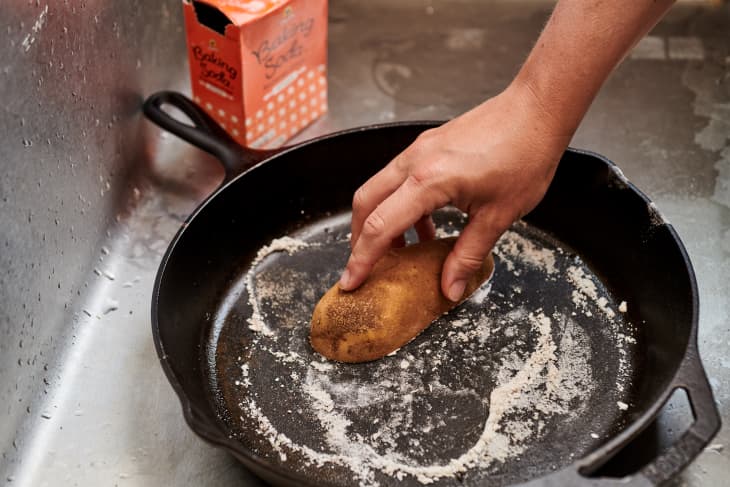
2. Add a few squirts of dish washing liquid.
3. Use a scrub brush to remove rust and debris. (Tip: a scrub brush will allow you to get into the crevices and etchings on the bottom of the pan better than a regular scrub pad.)
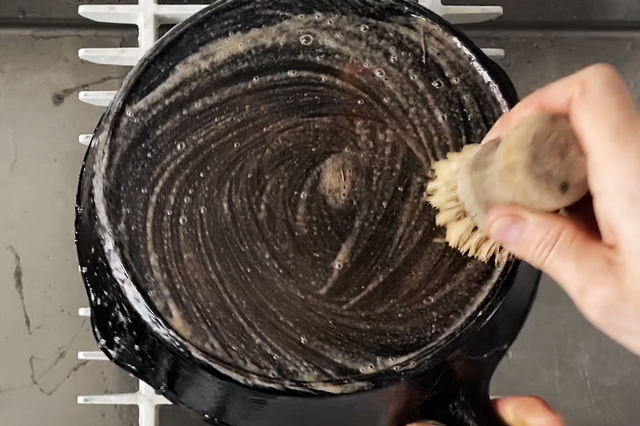
4. Turn pan over a clean using more baking soda and a scrub pad.
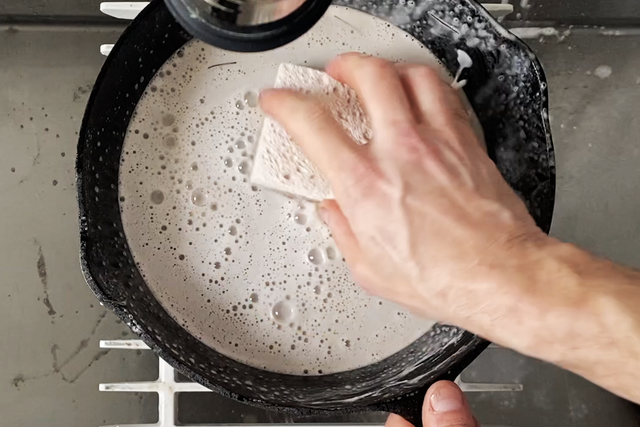
5. Rinse and dry thoroughly.
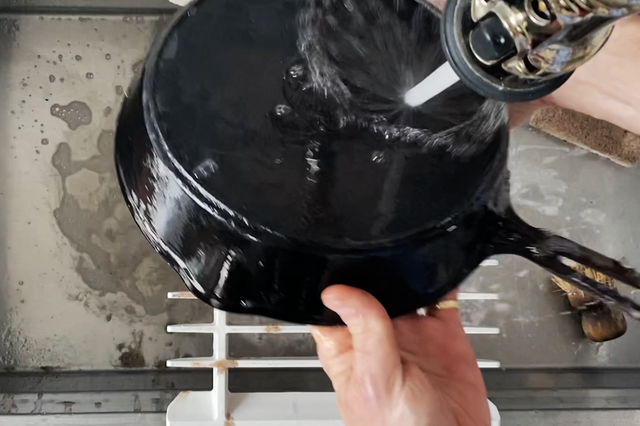
6. Since all that scrubbing will have removed the pan's natural patina along with the rust, you'll nee to re-season it. Start by using a paper towel or rag to rub a layer of shortening over both sides of the pan.
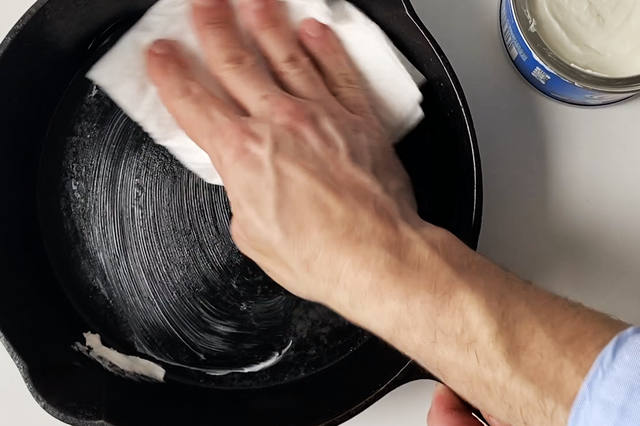
7. Place the pan upside-down on a large sheet pan and bake in a pre-heated 350-degree oven for one hour.
8. When an hour is up, turn the oven off; leave pan inside until cooled completely, then remove.
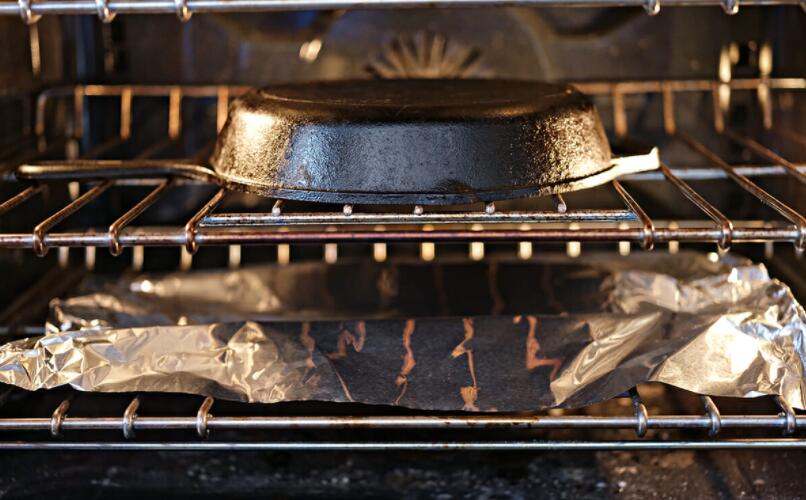
Now that your pan is cleaned, seasoned, and ready to use, here are a few tips for keeping it in tip-top condition: After each use, don't reach for the dish soap; instead, rub the pan with coarse kosher salt to remove cooking debris and apply a thin layer of shortening or oil if desired. And if your cast-iron cookware has a lid, always store it separately—never on top of the pan—to prevent humidity from building up and creating rust.
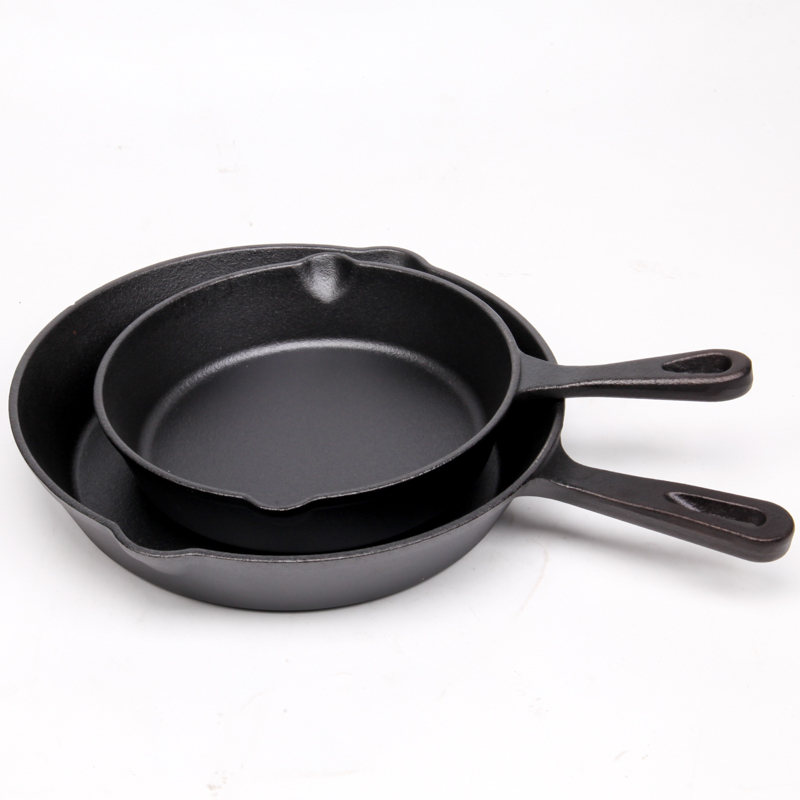
Pre-seasoned cast iron skillet by Center Cookware, Welcome to click and know more about us. We are a leading manufacturer of enamel cast iron cookware located in Shijiazhuang, China. Since 1989 we have prided ourselves in providing top quality cookware products(casserole,Dutch oven, roaster, skillet, grill pan etc.) to our global clients. We are BSCI / C-TPAT / ISO9001 certified and our product passed FDA/LFGB/CAL-65. We guarantee our quality!
Leave us message if you have any question.
Tips for Preventing Rust
Want to avoid a having a rusted cast-iron skillet in the first place? Keep the following tips in mind:
- Never soak the pan. Since cast iron is so vulnerable to rust, it’s best to limit your pan’s exposure to water as much as possible.
- Don’t let the pan air dry. Wipe off any excess water with a towel immediately after rinsing. To get your skillet bone dry, pop it on the burner to remove extra moisture.
- Lightly oil after use. Once dried, rub your skillet with a thin layer of vegetable oil before storing.
- Avoid certain foods: Acidic ingredients like tomatoes or vinegar can eat into seasoning and lead to rust. If you have a well-seasoned pan, this shouldn’t be a problem-but avoid that cooking that tomato sauce in your brand-new skillet.
- Use often: Unlike enamel cast iron skillet, pre-seasoned cast iron skillets love to be loved. They’ll start to rust if they’ve been cooped up for a long period of time without much air-circulation or use. This is often the case in coastal climates, where the salty air can have a big impact.
